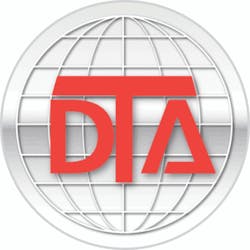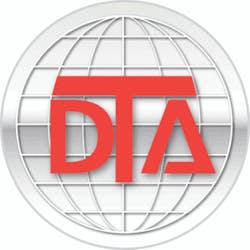DTA calls for trade show changes
Editor's Note: To comment on this article or to voice your opinion on dental trade shows, please join us in the PennWell dental community. The comment forum and discussion can be found by clicking here.
Editor’s Note: The Dental Trade Alliance (DTA) recently mailed a cover letter to organizers of the largest dental meetings along with a copy of the DTA Position Paper on Dental Meetings. This is a paper that has been talked about for some time, and has finally come to fruition. A copy of the DTA Position Paper on Dental Meetings follows. What is your opinion? Send me an e-mail at [email protected].
Introduction
The Dental Trade Alliance has concluded that the current model for dental meetings and exhibitions in the United States is no longer efficient or effective. The DTA believes that the dental industry and the professional dental societies that organize meetings with exhibitions must work together to change the current model to be more relevant and cost effective.
Over the past few years, the dental industry has become increasingly alarmed by several related trends:
- The number of dental meetings is very large and growing.
- Attendance at, and interest in, dental meetings by dentists and dental team members seems to be declining.
- The cost to exhibit at dental meetings is increasing dramatically.
The DTA believes that changes can and should be made to improve the meeting and exhibition experience of dental professionals and the industry. This position paper outlines positive actions that should be taken to improve dental meetings and exhibitions nationwide.
Research
Over a two-year period, the DTA collected information about dental meetings. This information came from the DTA members and from a professionally conducted survey of dentists to better understand what our customers want in a dental meeting and trade show. Following is a summary of information compiled by the DTA:
- Number of meetings: By our count, there are 167 dental meetings in the United States each year, one show for every 1,200 practicing dentists.
- Meeting attendance and exhibit interest: Overall attendance at dental meetings continues to decline. And, even when they attend dental meetings, surveys indicate that dentists and staff members are spending fewer hours on the exhibit floor. Our survey showed that at the typical dental meeting the average amount of time spent on the exhibit floor by professional attendees was 2.6 hours.
- Cost of exhibiting: The overall costs borne by the industry to exhibit at trade shows (staff, hotel, booth space, setup, etc.) has increased dramatically over the past few years.
- Dentists&rquo; expectations: Survey respondents indicated that dental meetings can be relevant and provide an opportunity to learn about new products and technologies. But they were clear about changes they would like to see in the existing dental meeting schedule and format.
Seven key traits of a successful dental meeting
In our research it became obvious that professionals and the industry had specific ideas about the organization of a successful dental meeting. We have delineated these ideas as traits of a successful meeting. We believe these traits will improve the meeting experience of attendees and the dental industry. We also believe that changes may attract professionals who do not currently attend dental meetings.
Using the information collected, the DTA has developed seven key traits of a successful dental meeting:
- Education: Continuing education must be a key component of dental meetings, and it should enhance, not compete with, the activities on the trade show floor.
- CE should be held in the same building or within close proximity to the exhibit space and should not be scheduled through lunch.
- Offer free or low-cost CE on the exhibit hall floor to encourage attendees to attend the trade-show.
- Presentations should be interactive, and geared to appeal to younger dentists.
- Entertainment and events: Memorable after-hours entertainment is key to attracting attendees, especially younger dentists.
- Exhibit traffic and purchasing incentives: Exhibitors need assistance from meeting organizers to ensure participants visit the vendor displays.
- Registration fees should be low, and rebates offered to participants who make purchases at the show.
- Create traffic on the exhibit floor by offering purchasing incentives and/or contests.
- Lunch should be served on or near the show floor, with lunch hours staggered to maintain a steady flow of attendees. Ensure there&rquo;s enough clean seating to accommodate the lunch crowd, so that attendees can eat lunch quickly and then visit the show floor.
- Build the cost of lunch into the registration price, and offer a box lunch to attendees.
- Location, accommodations, and infrastructure: Meetings should be held in major population centers or highly desirable resorts with reasonable proximity to major airports and highways. Hotel rooms should be near the convention center.
- Metrics: Show organizers should provide reliable metrics (attendance by category, time spent on the exhibit floor, leads generated, etc.) for dental shows. In many industries, meeting organizers have invested in “smart badge” technology to ease the gathering of this information.
- Schedule: Shows should be four or fewer days, with exhibits open no more than three days.
- The trade prefers a Thursday-Friday-Saturday exhibit hall schedule, with no half-days.
- Exhibition hours should run from around 9 a.m. to 6 p.m., with CE courses ending prior to the close of the exhibit hall to allow for attendees to visit the hall at the conclusion of the day.
- Plan a CE-only day after the close of the exhibits.
- Size: Dental meetings should be designed to attract at least 5,000 dentists plus additional dental staff members. Small meetings are not cost-effective for meeting organizers or exhibitors, and they preclude the quality education and entertainment that today&rquo;s dentists seek in a destination meeting.
Consolidation of shows
Fewer, larger dental meetings accomplish several of the goals expressed above, goals with which those dentists surveyed agreed: higher quality education and entertainment, more desirable locations, more meeting traffic. For the trade, larger shows mean a higher return on investment. Therefore, the trade strongly endorses a nationwide consolidation of dental meetings so that each meeting meets the 5,000-dentist target.
A call to action
Changing a model that has been in place for multiple generations will not be easy, and cannot be accomplished without a partnership between organized dentistry and the dental trade. To encourage change, the DTA endorses the following course of action:
- The DTA will establish an annual rating system for all U.S. dental meetings based on the Seven Key Attributes of a Successful Dental Meeting outlined earlier. The rating system, based on a 100-point scale, will be developed in concert with professional dental organizations, and results will be published annually. DTA members pledge significant support to those dental meetings that score highest on this rating system.
- The DTA will work toward the consolidation of existing dental meetings with words, actions, and funds: we will assemble a prototype U.S. dental meeting schedule, and advocate for consolidation. We will offer financial incentives to encourage the merger of smaller dental meetings into larger, regional meetings that better fit what today&rquo;s dentist and dental company demands.
Designing the next generation dental meeting will take energy, commitment, and creative thinking. The DTA pledges to work with other key stakeholders to invent a dental meeting format that will meet the needs of the dental professional and the industry.
Trade show response
Yankee Dental Congress considers the expectations of attendees and especially exhibitors important to its continued success. To the extent that Yankee can meet or surpass these expectations is a great challenge. We are willing to take on that challenge to provide the quality and value for attendees and exhibitors.
Robert E. Boose, EdD, Executive Director Massachusetts Dental Society
Editor&rquo;s follow-up note
Representatives of DTA and the Conference of Dental Meetings will meet at the American Dental Association&rquo;s Annual Session in October in San Antonio. The two groups will discuss the position paper as well as possible ways to work together to solve some of the stated issues. Proofs will bring you the results of the meeting.
Editor's Note: To comment on this article or to voice your opinion on dental trade shows, please join us in the PennWell dental community. The comment forum and discussion can be found by clicking here.

